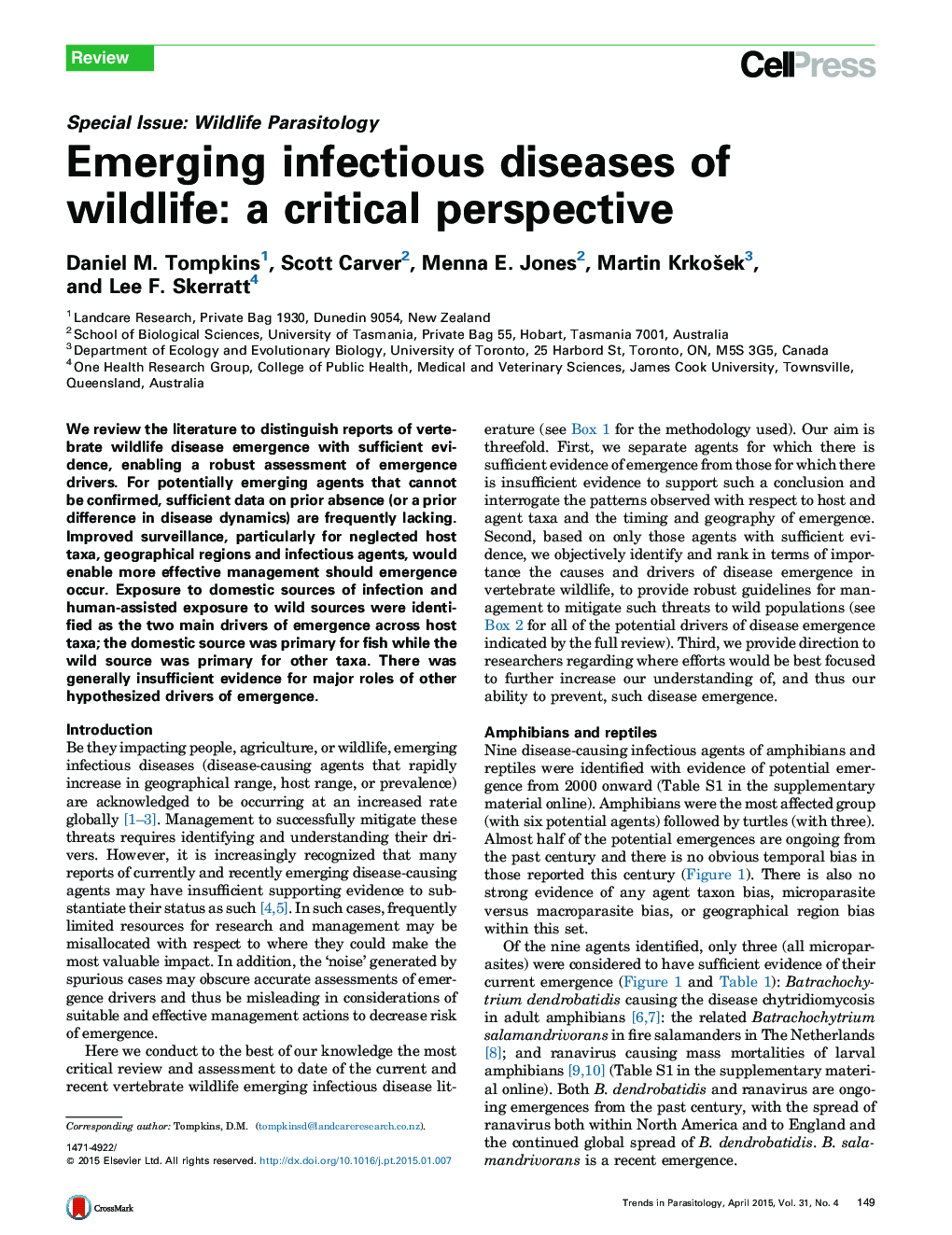| Article ID | Journal | Published Year | Pages | File Type |
|---|---|---|---|---|
| 3422963 | Trends in Parasitology | 2015 | 11 Pages |
•We critically review the evidence for current vertebrate wildlife disease emergence.•Sufficient data on prior absence or difference are lacking for many infectious agents.•Host exposure to domestic infection sources is the primary driver of fish disease emergence.•Human-assisted exposure to wild infection sources is the primary driver for other taxa.
We review the literature to distinguish reports of vertebrate wildlife disease emergence with sufficient evidence, enabling a robust assessment of emergence drivers. For potentially emerging agents that cannot be confirmed, sufficient data on prior absence (or a prior difference in disease dynamics) are frequently lacking. Improved surveillance, particularly for neglected host taxa, geographical regions and infectious agents, would enable more effective management should emergence occur. Exposure to domestic sources of infection and human-assisted exposure to wild sources were identified as the two main drivers of emergence across host taxa; the domestic source was primary for fish while the wild source was primary for other taxa. There was generally insufficient evidence for major roles of other hypothesized drivers of emergence.
